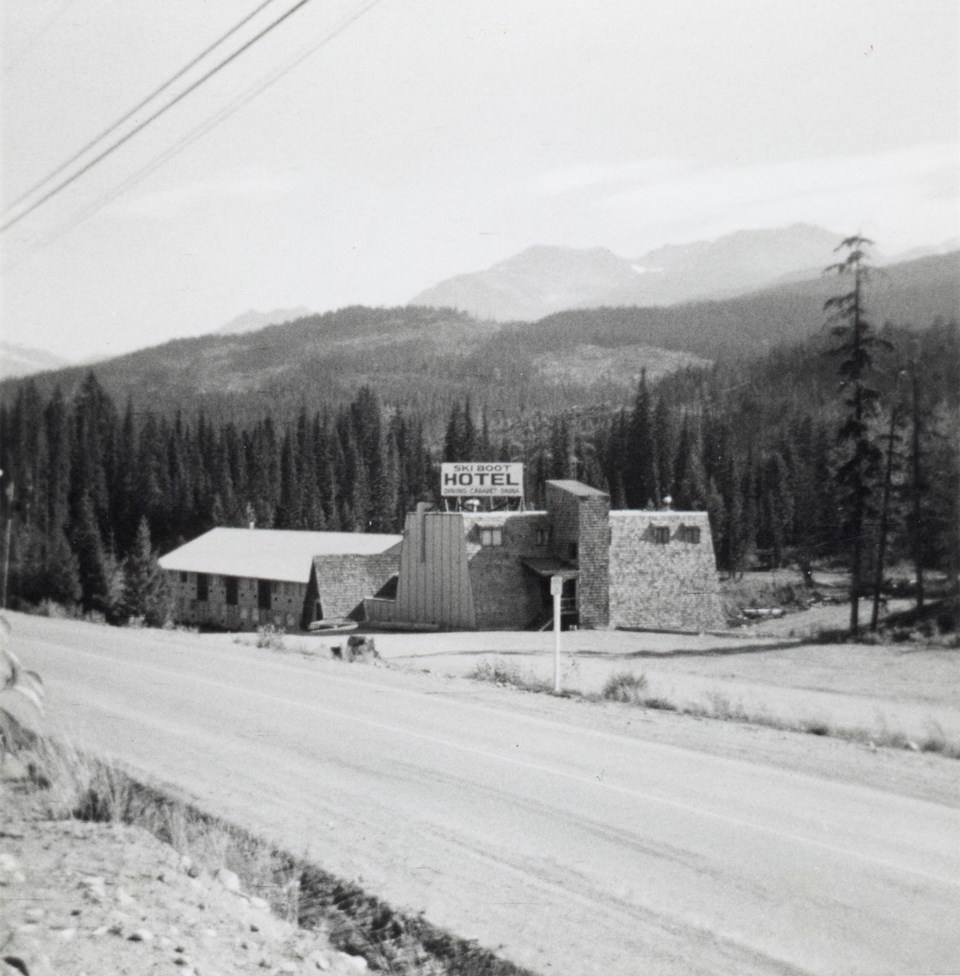Visitors coming to Whistler today have a variety of accommodation options from campsites to luxury hotel suites. In the 1970s there weren’t nearly as many choices. In 1972, Garibaldi’s Whistler News described the situation as: “There are no big, fancy resort-type hotels in the area offering everything under the sun. Instead, scattered around the base of the lifts are numerous inns and restaurants offering a good selection of accommodations and dining facilities.” Most of these establishments, such as the Cheakamus Inn, Highland Lodge, and Christiana Inn, were located around the area now known as Creekside. The Ski Boot Hotel, however, was a little further away.
In 1966, David and Irene Andrews purchased a ten-acre site along Highway 99 and Fitzsimmons Creek for $10,000, about five kilometres north of the newly opened gondola base. Over the next year, they began construction of the Ski Boot Motel, a “modern” motel expected to open during the 1967/68 ski season. The Andrews offered a variety of accommodations in their 32 units, from private rooms to suites that slept eight. During its first season, the Ski Boot Motel provided reasonable rates, sometimes as low as $5/night, and even offered a “ski week” that included five nights accommodation, meals, and lift tickets for just $67.50.
Over the next few years, more development was planned and built north of the ski lifts, though the majority of the lodges and nightlife continued to be found around the gondola base. In 1971, the Andrews announced a major investment of $100,000 (about $1.35 million in today’s dollars) in their Ski Boot property, now called the Ski Boot Lodge Hotel, to turn it into “Whistler’s Largest and Most Complete Tourist Resort.” They proposed to add a full-service dining room, cocktail lounge, beer parlour, convention facilities, laundromat, Finnish sauna, and additional accommodations, along with plans for live entertainment and a bus to transport skiers between the lifts and the lodge (the purple bus became known to some as the “Purple People Eater,” no doubt from the 1958 song). The beer parlour opened to the public (guests and residents alike) in January 1972, with the dining room following that March. The lodge also introduced two new members of staff that season: two St. Bernard puppies named Ski and Boot. While rates did increase during this period, the Ski Boot continued to be known for reasonable prices.
The Andrews reportedly sold the Ski Boot Lodge Hotel for $350,000 in 1973, though not much is known about this period. Over the next few decades, the property was sold numerous times and went by various names, including the White Gold Inn (during which time exotic dancing was first introduced), Fitzsimmons Lodge, Bavarian Inn, and the Shoestring Lodge. The term “Boot,” however, continued to be associated with the property and specifically the Boot Pub.
Despite being located outside of both the gondola base and later the Whistler Village, the Andrews’ early commitment to reasonable rates and additions to the original lodge laid the foundation for the Boot to grow into an institution as the Whistler area continued to develop and grow. Though it closed its doors in 2006 and was then demolished, many residents and visitors still fondly share their stories of times spent at the Boot, whether they stayed there when they first arrived in Whistler, ate at Gaitors as a child, or spent their evenings at the bar.





